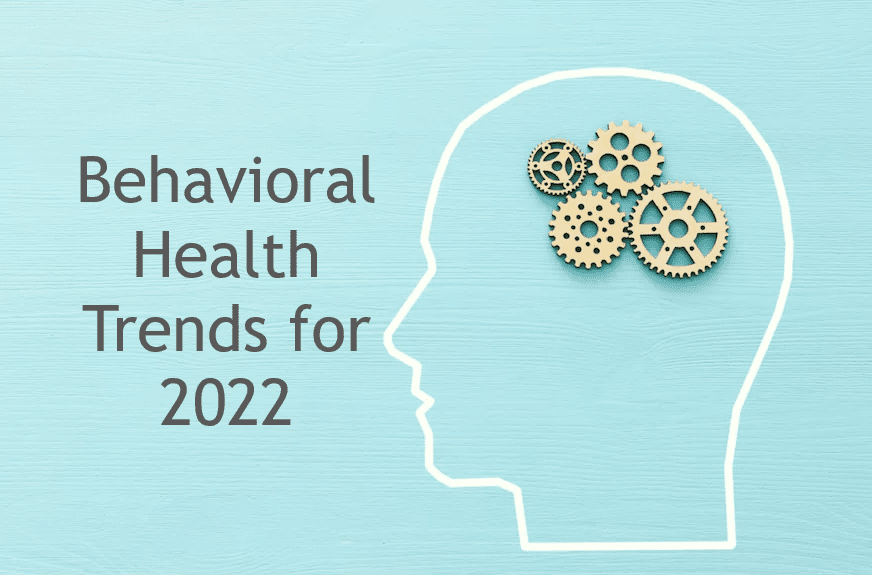Behavioral health (BH) has been one of the most extensive growth areas in the health care ecosystem over the last two years, fueled by the Public Health Emergency (PHE), but it is still an ignored, overlooked, understaffed, and underfunded component of care delivery in the United States. Providers, payers, and both public and private investors have all taken notice.
The benefits of behavioral health services are becoming more widely known among the general public. Celebrities openly discussing their need to participate in therapy and prioritize their mental health may be eroding the stigma of seeking help. That’s good news for providers, who can expect more patients to seek help with their minds as well as their bodies.
Behavioral Health Trends for 2022
Behavioral health is particularly relevant, as the mind-body connection is being revealed in new and fascinating ways. Here are some of the most important Behavioral Health Trends for 2022.
-
Impact of Covid-19 on Behavioral Health
When it comes to events and situations that can aggravate patients’ anxiety, the impact of the novel coronavirus that has caused infections and death all over the world cannot be overstated. Individuals may be experiencing levels of anxiety they have never experienced before, and with this increased fear and stress comes behavioral health issues.
According to Health Leaders Media, fistfights nearly broke out among a group of people at a pharmacy who wanted access to a new box of COVID-19 test kits. Fears of new coronavirus variants, such as Omicron, cause people to scream at other shoppers, straining their mental health.
-
Changes in Measuring Behavioral Health Outcomes
In 2022, the rising demand for ABA therapy is expected to be a driving force for these types of healthcare providers to demonstrate the value they provide to patients. There are currently no unified measures of patient outcomes, according to Behavioral Health Business. Payers may strengthen their relationships with ABA providers by creating “value-based incentives” based on current industry standards (and measurements).
Ideally, ABA providers will demonstrate that they are open-minded and willing to work with payers to address the increasing pressure to provide more of these services. Measurements are critical for ensuring that providers adhere to standards and that patients are comfortable participating in therapy.
-
An Integration of Substance Abuse Treatment and Mental Health in Primary Care Settings
As more healthcare providers recognize the intimate relationship that often exists between mental health disorders and substance abuse, JD Supra predicts that by 2022, substance abuse treatment services will be more integrated with mental health care efforts in primary care settings.
In support of this merger of treatment modalities, there will be calls to strengthen as well expand parity through the 2008 Mental Health Parity and Addiction Equity Act. Furthermore, providers may integrate substance abuse treatment efforts in mental health situations by utilizing the authority of the Department of Health and Human Services to increase funding for integrating behavioral health and primary health programs. Medicaid will reimburse inter-professional players who consult with primary care providers when their patients require advanced care.
-
A Rise in Behavioral Health Independent Contractors
Many practices and other healthcare providers chose telework arrangements for employees who did not need to be physically present during COVID-19 infections. With the popularity of work-from-home opportunities growing, the use of independent contractors is increasing. In 2022, healthcare organizations will increasingly rely on independent contractor providers.
This allows practices to expand quickly without having to formally onboard new employees. The relationship is frequently beneficial to both patients and contractors. According to JD Supra, one thing to keep in mind is to properly classify the nature of work performed by such contractors. While they provide a great deal of flexibility, you don’t want to run afoul of labor laws.
-
Adjustments in Value-based Care
In 2022, providers appear to be shifting more toward value-based care. According to Health Leaders Media, the tipping point for making the transition appears to be more payers wanting to see value-based care at the center of behavioral health services. While the path to value-based care will be difficult, it is a growing trend this year. Patients will recognize the added value they receive from value-based care, which will contribute to its acceptance among practices.
Value-based care is an important area of concern that more providers should consider. It is intended to determine whether or not patients are improving and recovering, as well as how long it takes for them to regain their health. You can track and analyze these results across entire populations to get a better sense of how well your team is doing. However, establishing a comprehensive, value-based framework will be a lengthy process requiring input from numerous healthcare industry participants. Among the statistics will be information on how long it takes, on average, to get patients well from practice to practice.
With all the changes in the healthcare industry, and new research findings coming out every day, it can be a challenge for healthcare practitioners to stay on top of it all and still manage all of their patients. We streamline your practice to allow you to see more patients and generate more revenue while focusing on what matters most- taking care of your patients.
Electronic Health Records (EHR), Electronic Medical Records (EMR), and Revenue Cycle Management (RCM) are three services we offer to come alongside you and lighten your load.
To contact us today to learn more__
Call @ +1 (224) 999-6997
Or
Get a free no-sting attached billing services quote from ZEE Medical Billing for your practice.





